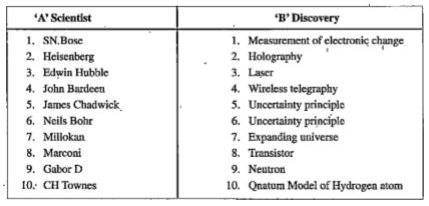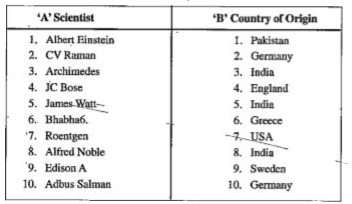Name some defence mechanisms in plants against herbivory.
Step-by-Step Text Solution:
1. Introduction to Defense Mechanisms:
- Plants have evolved various defense mechanisms to protect themselves from herbivorous animals. These mechanisms can be broadly classified into two categories: morphological and chemical defenses.
2. Morphological Defenses:
- Morphological defenses involve physical modifications of the plant structure.
- Examples include:
- Thorns: Sharp structures that deter animals from feeding.
- Spines: Modified leaves or stems that can cause injury to herbivores.
- Tough Leaves: Some plants have leaves that are tough and fibrous, making them less palatable.
3. Chemical Defenses:
- Chemical defenses involve the production of toxic or deterrent substances that can harm or repel herbivores.
- Examples include:
- Phytoalexins: These are secondary metabolites that plants produce in response to stress, which can inhibit the growth of herbivorous insects.
- Alkaloids: Compounds such as nicotine, caffeine, quinine, and opium are produced by some plants and can be toxic or unpalatable to herbivores.
4. Conclusion:
- Through these morphological and chemical adaptations, plants can effectively defend themselves against herbivory, ensuring their survival and reproduction.
- Plants have evolved various defense mechanisms to protect themselves from herbivorous animals. These mechanisms can be broadly classified into two categories: morphological and chemical defenses.
- Morphological defenses involve physical modifications of the plant structure.
- Examples include:
- Thorns: Sharp structures that deter animals from feeding.
- Spines: Modified leaves or stems that can cause injury to herbivores.
- Tough Leaves: Some plants have leaves that are tough and fibrous, making them less palatable.
- Chemical defenses involve the production of toxic or deterrent substances that can harm or repel herbivores.
- Examples include:
- Phytoalexins: These are secondary metabolites that plants produce in response to stress, which can inhibit the growth of herbivorous insects.
- Alkaloids: Compounds such as nicotine, caffeine, quinine, and opium are produced by some plants and can be toxic or unpalatable to herbivores.
- Through these morphological and chemical adaptations, plants can effectively defend themselves against herbivory, ensuring their survival and reproduction.
Topper's Solved these Questions
- ORGANISMS AND POPULATIONSBOOK - ICSECHAPTER - ORGANISMS AND POPULATIONSEXERCISE - PRACTICE QUESTIONS ( SHORT ANSWER TYPE -II QUESTIONS)
18 Videos
- ORGANISMS AND POPULATIONSBOOK - ICSECHAPTER - ORGANISMS AND POPULATIONSEXERCISE - PRACTICE QUESTIONS (LONG ANSWER TYPE QUESTIONS)
18 Videos
- ORGANISMS AND POPULATIONSBOOK - ICSECHAPTER - ORGANISMS AND POPULATIONSEXERCISE - PRACTICE QUESTIONS ( VERY SHORT ANSWER TYPE QUESTIONS)
18 Videos
- MOLECULAR BASIS OF INHERITANCEBOOK - ICSECHAPTER - MOLECULAR BASIS OF INHERITANCEEXERCISE - MCQ (Source Based Questions)
23 Videos
- PRINCIPLES OF INHERITANCE AND VARIATIONBOOK - ICSECHAPTER - PRINCIPLES OF INHERITANCE AND VARIATIONEXERCISE - MULTIPLE CHOICE QUESTION
98 Videos
Similar Questions
Knowledge Check
Assertion: Macrophages are multipurpose cells of the body's defence mechanism.
Reason: They carry on phagocytosis, display the antigens of the engulfed microbes to the lymphocytes and secrete interleukin-IAIf both Assertion and Reason are true and the Reason is the correct explanation of the Assertion.BIf both Assertion and Reason are true and the Reason is not the correct explanation of the Assertion.CIf Assertion is true but the Reason is false.DIf both Assertion and Reason are false.Assertion: Mild fever strengthens the defence mechanism of the body.
Reason: High temperature is harmful and should be brought down by giving antipyretics and by applying cold packs.AIf both Assertion and Reason are true and the Reason is the correct explanation of the Assertion.BIf both Assertion and Reason are true and the Reason is not the correct explanation of the Assertion.CIf Assertion is true but the Reason is false.DIf both Assertion and Reason are false.
The main mechanical tissue of plant is :
View SolutionName some bacterial disease.
View SolutionMatch the name of the scientist in column A against the country of origin in Column B.

View SolutionMatch the name of the scientist in column A against the country of origin in Column B.

View SolutionWhich method of defence is employed to protect against root knot disease by nematodes ?
View SolutionName some of the inclusions found in plant cells.
View Solution